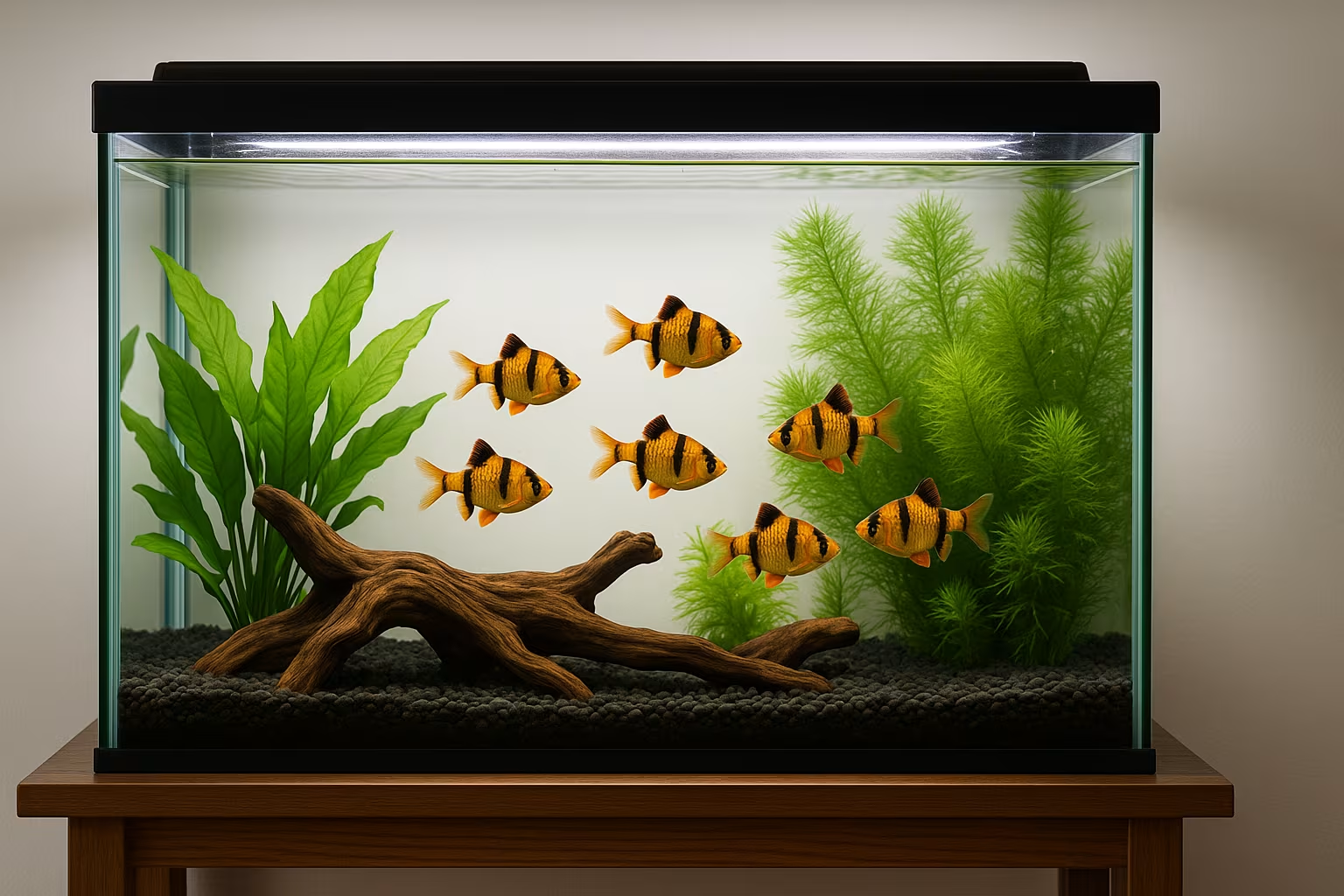

Golden Tiger Barbs are lively, schooling fish. They dart side-to-side all day, so cramped quarters stress them out and dull their color. A roomy tank is your single best investment for their long-term health.
| School Size | Minimum Volume | Recommended Footprint |
|---|---|---|
| 6 fish (absolute minimum) | 20 gal | 24″ L × 12″ W |
| 8–10 fish (ideal) | 29 gal | 30″ L × 12″ W |
Longer tanks beat tall, narrow ones because these fish cruise the mid-water zone. Extra length gives them room to form loose shoals instead of crowding corners.
Golden Tigers enjoy a gentle current. Any hang-on-back or canister rated for the next tank size up usually hits that flow rate. Check the specs on the box rather than guessing—manufacturers list “gallons per hour” (GPH). Aim for 150 GPH on a 29-gallon.
Use a fully submersible heater with an external temperature dial. Place it near the filter outflow so warmed water circulates evenly. Add a cheap digital thermometer; the sticker strips on glass aren’t precise enough.
Substrate: Fine gravel or sand, 2–3 cm deep.
Plants: Fast-growers like hornwort or water sprite soak up excess nutrients.
Hardscape: A couple of smooth rocks or driftwood pieces give the fish visual breaks but keep at least half the tank open for free swimming.
A cycled aquarium has enough beneficial bacteria to convert toxic ammonia → nitrite → nitrate. The process takes 3–4 weeks:
Set up all equipment with de-chlorinated water.
Add an ammonia source (fish food or bottled ammonium chloride).
Test daily. When ammonia and nitrite both read 0 ppm and nitrate stays under 40 ppm, you’re ready.
Skipping this step risks losses within days—most “new tank syndrome” cases trace back to an uncycled filter.
Keep Tiger Barbs in groups of at least 6; fewer means fin-nipping.
Compatible tank mates: Corydoras catfish, zebra danios, bristlenose plecos, or similarly active species. Avoid slow-moving, long-fin fish like bettas or fancy guppies.
Add new fish gradually: one group per week, allowing the bio-filter to adjust.
| Task | Frequency | Notes |
|---|---|---|
| Water test | Weekly | Ammonia, nitrite, nitrate, pH |
| Water change | Weekly | 25 % using de-chlorinated tap |
| Filter rinse | Monthly | Swish media in old tank water |
| Glass wipe | As needed | Algae magnet or clean sponge |
Consistent small water changes beat big, infrequent ones. Clear water is not the same as clean water—test kits don’t lie.
A longer tank, solid filtration, and patient cycling set the stage for bright colors, active schooling, and zero fish losses. Next up, we’ll cover feeding for vibrant stripes and steady growth in Article 2.
Restock alerts, care tips, and the occasional coupon one email a month, unsubscribe anytime.